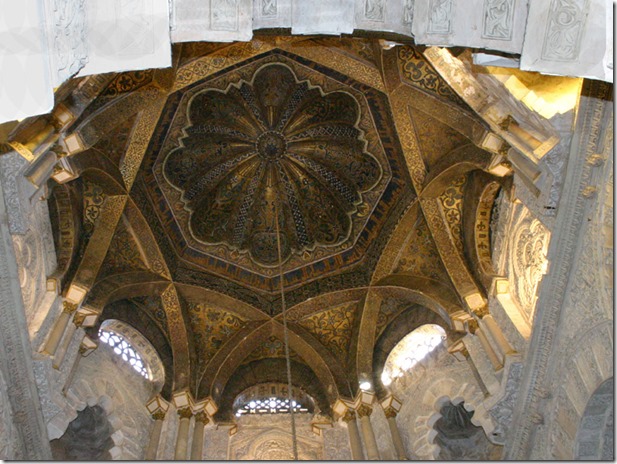It was day three of our tour of Andalucía and another early breakfast. We were on the coach at 8.15am and heading north along the N432. Our route took us through an Olive Oil producing area. There were thousands of olive trees each one producing up to 30kg of Olives which can give up to 5 litres of oil. Our tour guide gave us recipes for olive oil on toast with tomato, ham or garlic. Just like Mama used to make.
We passed by Alca and the Royal castle. Many of the towns whose names begin with Al are associated with castles. The sun was still low in the sky and the area was very photogenic with the rows of trees and the long shadows.
We were now in a wine producing area and we stopped at Montilla to visit a typical Andalucian wine bodega to sample some of the local wine.
We arrived in Cordoba and were taken to our hotel. No time to relax because we were due back on the coach at 3.15pm for our guided city tour. But we did have time for a bite to eat.
We went to a local bistro and ordered the local speciality. Salmorejo, a cold soup similar to Gazpacho. Salmorejo is a puree consisting of tomatoes and bread and it originated in Cordoba. It is made from tomatoes, bread, olive oil and garlic. Normally the tomatoes are skinned and then pureed with the other ingredients. The puree is then served cold and garnished with Spanish Serrano ham and diced hard boiled eggs. It was delicious.
………………………………………………………………………………………………………………………………
We now began our tour of the city. Cordoba was founded by the Romans and due to its strategic importance as the highest navigable point of the Guadalquivir river it became a port city of great importance. It was used to ship Spanish olive oil, wine and wheat back to Ancient Rome. The Romans built the bridge crossing the river which is now known as “ El Puente Romano”. Cordoba’s greatest claim to fame was when it became the capital of the Moorish kingdom of El-Andalus. During this period work began on the building of the Great Mosque, or Mezquita. This became one of the largest Mosques in all of Islam.
The city of Cordoba was reconquered by the Christians in 1236 but they left the building standing but built their cathedral in the midst of its rows of arches and columns creating the extraordinary church-mosque that we see today.
The city of Cordoba
The City Walls
The Mosque.
The use of alternate brick and stone in the arches has created a red and white stripped pattern and gives a distinctive character to the whole design.
The Mirhab.
The Mirhab had two functions in Islamic worship. First it indicated the direction of Mecca ( therefore prayer) and it also amplified the words of the Imam, the prayer leader. The shell shaped ceiling is carved from a single block of marble.
Looking up at the main Cupola.
The Cathedral.
After the reconquest in 1236 and the subsequent Christianisation of the Great Mosque no immediate alterations were made to the building. It was not until 1523 that Bishop Alonso Manrique obtained permission from Emperor Charles V to build the Cathedral inside the Mosque.
Later we had a chance to walk through the winding streets of the old town before returning to our hotel. We had a good meal at the hotel and later we wandered down to the main square to watch the fountains, a rare chance to relax.








